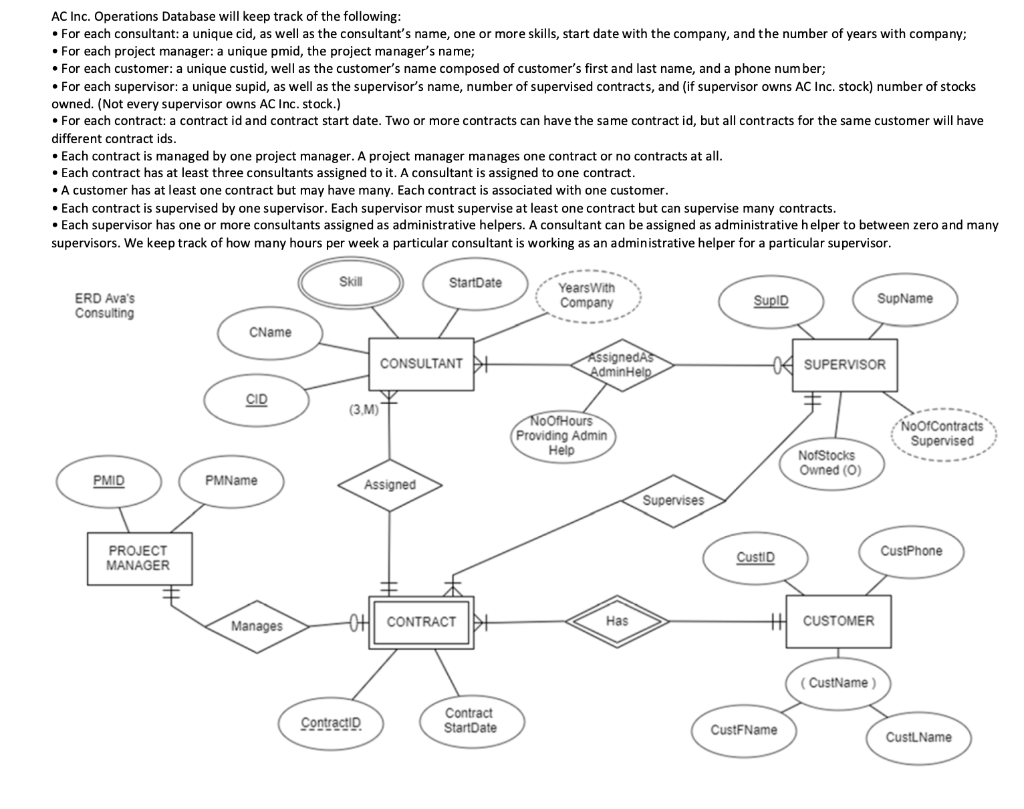


AC Inc. Operations Database will keep track of the following: - For each consultant: a unique cid, as well as the consultant's name, one or more skills, start date with the company, and the number of years with company; - For each project manager: a unique pmid, the project manager's name; - For each customer: a unique custid, well as the customer's name composed of customer's first and last name, and a phone number; - For each supervisor: a unique supid, as well as the supervisor's name, number of supervised contracts, and (if supervisor owns AC Inc. stock) number of stocks owned. (Not every supervisor owns AC Inc. stock.) - For each contract: a contract id and contract start date. Two or more contracts can have the same contract id, but all contracts for the same customer will have different contract ids. - Each contract is managed by one project manager. A project manager manages one contract or no contracts at all. - Each contract has at least three consultants assigned to it. A consultant is assigned to one contract. - A customer has at least one contract but may have many. Each contract is associated with one customer. - Each contract is supervised by one supervisor. Each supervisor must supervise at least one contract but can supervise many contracts. - Each supervisor has one or more consultants assigned as administrative helpers. A consultant can be assigned as administrative helper to between zero and many supervisors. We keep track of how many hours per week a particular consultant is working as an administrative helper for a particular supervisor. For each foreign key, specify NULL if the foreign key is allowed to be NULL, or specify NOT NULL if the foreign key is not allowed to be NULL. For each foreign key, specify either ON DELETE RESTRICT or ON DELETE CASCADE depending on which is appropriate. Step 3. List only the tables (or "relations") that would have attributes added to them in "Step 3: Mapping of Binary 1:1 Relationship Types" using the Foreign key approach. For each table you list, specify only the attributes added in step 3. Indicate which attributes are foreign keys. If there are no 1:1 Relationship Types, then write, "There are no 1:1 Relationship Types." Your answer for Step 3 goes here









